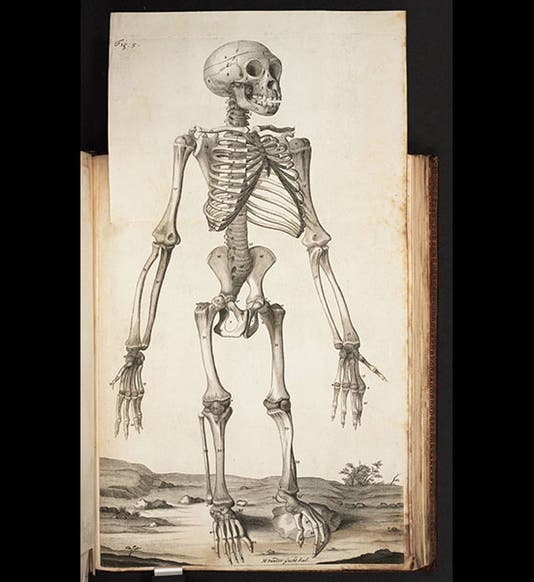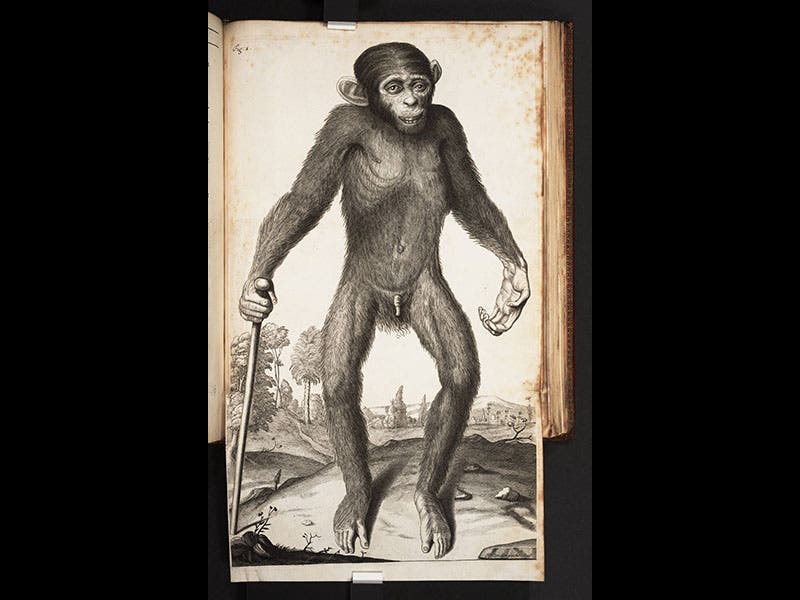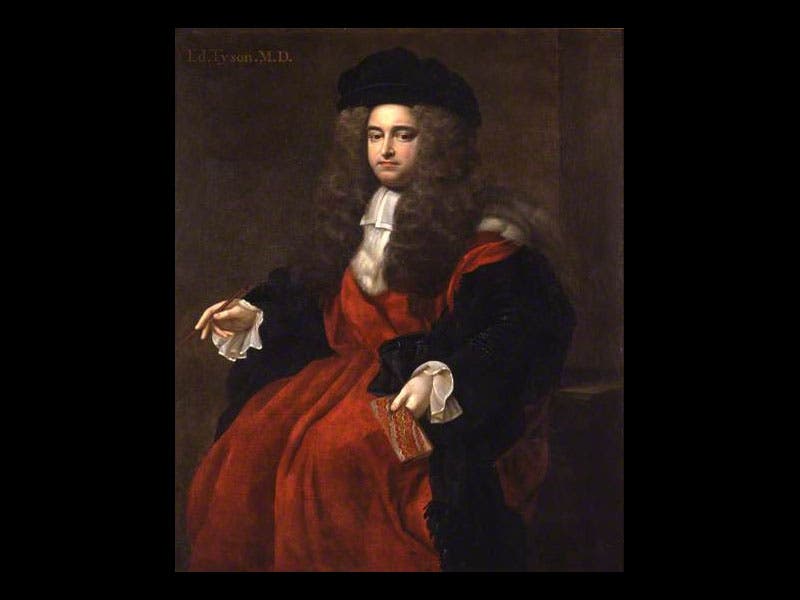Scientist of the Day - Edward Tyson
Edward Tyson, an English physician and anatomist, was born Jan. 20, 1651. In 1698, a young chimpanzee arrived in London from Angola, the first great ape ever seen in England. Tyson viewed the creature while it was alive, but only briefly, since it died soon after arrival. So Tyson took the opportunity to dissect the animal, in order to compare its anatomy with that of a human and a monkey. In 1699, he published his results as Orang-outang, sive homo sylvestris, a large quarto with beautiful illustrations by William Cowper. Tyson concluded that the orang-outang, as he called his chimp, walked upright, and was closer to a human than a monkey in its body structure. Tyson is often portrayed as some sort of proto-evolutionist, eyeing the possibility that apes and humans had a common ancestor, but nothing could have been further from his mind. Instead, he thought that he had filled in a gap in the Great Chain of Being that ran from inanimate nature up through plants, invertebrates, reptiles, mammals, and humans. Before Tyson there had been a big hole between monkeys and humans; now there was an occupant for that space. So the book was not a precursor to evolutionary theory, but it was a milestone in comparative anatomy.
We featured Tyson’s book in our 2009 exhibition, The Grandeur of Life. The first four images above are all from Tyson’s book, and show the chimp skeleton, external appearance, muscle structure, and title page. The portrait, painted in 1695, is in the Royal College of Physicians in London.
Dr. William B. Ashworth, Jr., Consultant for the History of Science, Linda Hall Library and Associate Professor, Department of History, University of Missouri-Kansas City. Comments or corrections are welcome; please direct to ashworthw@umkc.edu.








![“Aurora Borealis,” hand-colored wood engraving by Josiah Wood Whymper, [Natural Phenomena], plate 2, 1846 (Linda Hall Library)](https://assets-us-01.kc-usercontent.com:443/9dd25524-761a-000d-d79f-86a5086d4774/0245ffcb-b70c-477c-8792-0a73ebd54eb2/Whymper%2011.jpg?w=210&h=210&auto=format&fit=crop)


